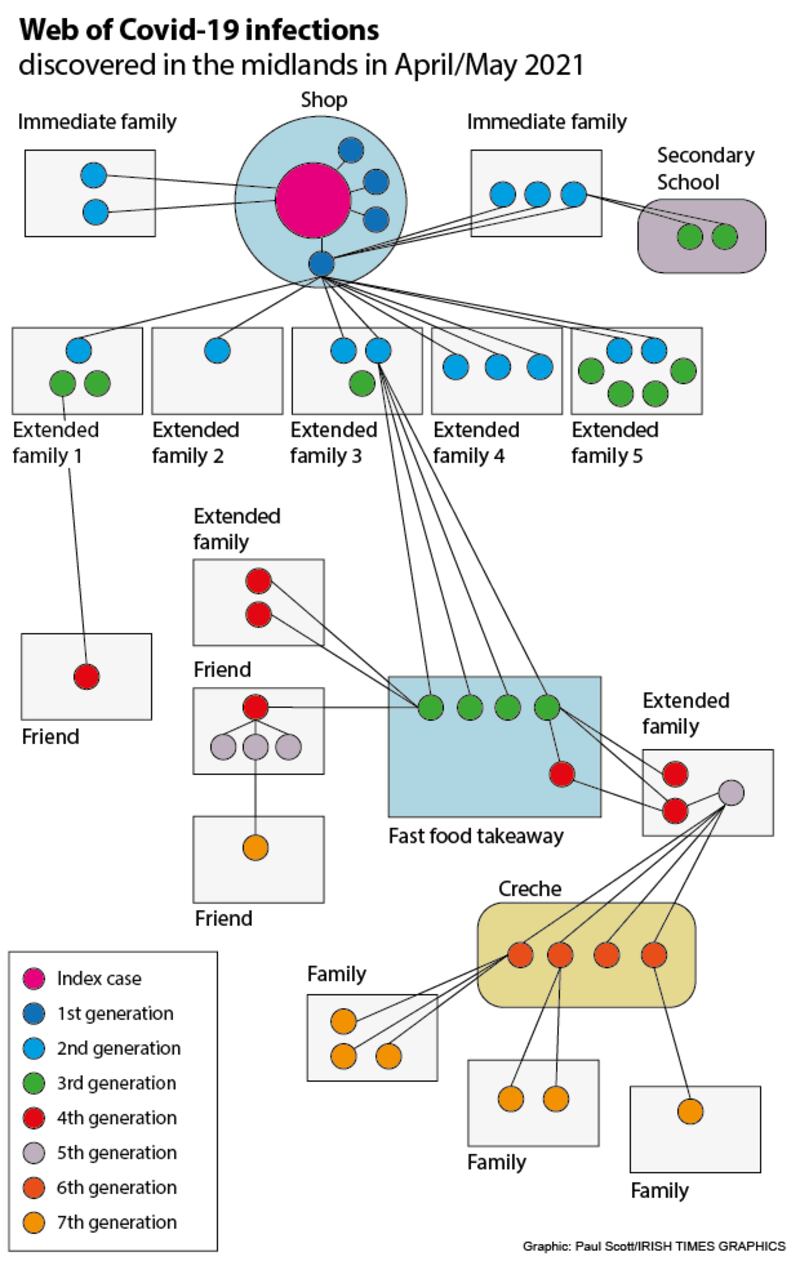The spread of infection from a Covid-19 case in a shop worker in the midlands led to a further 54 people becoming infected, mostly due to a family gathering.
The Department of Public Health in HSE Midlands found in a new case study of linked cases that the social gathering attended by a person infected by the shop worker led to a further 43 Covid-19 cases.
The web of contagion from the initial “index case” in the shop, recorded in April and May, spread to 12 families, 15 households, a food takeaway, a secondary school and a creche.
| Total doses distributed to Ireland | Total doses administered in Ireland |
|---|---|
| 12,143,670 | 10,222,511 |

Nine people were directly infected by a shop worker attending the extended family gathering.
One person who attended the party infected five co-workers in a food takeaway from where the virus spread to four other households and the creche, where four people were infected.
Transmission
Three infected people in the creche spread the virus to six other people in their families.
The case study by public health doctors in the midlands shows how onward transmission can spread the virus into different settings from close contacts.
The transmission across the 55 cases involved the virus spreading through “seven generations” as it passed from person to person.
"This is a possible picture that could be reproduced at any time again in the coming weeks," said Dr Una Fallon, director of public health in HSE Midlands.
She warned that increased mixing as further restrictions are lifted could lead to similar spreads of transmission and that unvaccinated young people could still be hospitalised if infected.
“We do worry that a level of complacency has set in because things have opened up that people think it is all over. It is not over. We are not stood down from investigating,” she said.
She said public health doctors have been encountering difficulties advising close contacts of cases because people thought they were hoax calls connected to the cyberattack on the HSE.
“That has been an issue,” she said. “I think with the cyberattack people may fear that we are a hoax. We are not a hoax. We will ring you and we will do our best to prove who we are.”
Extra caution
Dr Fallon said non-essential businesses reopening for the first time this year should prepare for a phone call from public health and to share lists of close contacts, if they have a case and that any close contacts or infected people should expect to have to isolate at home for 14 days.
She urged young people and their families not to attend graduation or end-of-academic year parties or stand in collective school photographs or to participate in study groups.
Leaving Cert students, along with family and friends, should show extra caution as the time was approaching where they could be prevented from sitting their exams from June 9th if they are named as a close contact of a case testing positive for the first time in a day 10 test, she said.
“The group that needs protection are Leaving Cert students who want to sit exams,” she said.










